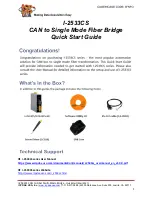
54
MODULES
10. BLANk pLATES 16-609 & 16-609-01
10.1. Description
The blank plate module is used to provide some reserve space to enable you to add modules later
on. The blank plate module is used in combination with other modules from the range Access Con-
trol Design. The module is built-in into one of the external units of the range. There are 2 types of
blind plates. Type 1 (16-609) is an enamelled black blank plate and type 2 (16-609-01) is a blank
plate with an aluminium front. The front plate of type 2 (16-609) can be personalized on demand
by engraving a house number, name, logo… (ref. for custom-made goods: 16-609-99). Please
send a completed form for custom-made goods (available at Niko, the wholesaler and the sales
representatives of Niko) to Niko NV (address at the back of this user manual). Thanks to the surface
treatment, the module is weather-proof.
10.2. Installation
First mount the modules that have to be placed on top of the blank plate modules. Mount the module
in the external unit by means of the 4 supplied screws (see ‘2. Mounting the modules’).
10.3. Technical data
Dimensions: ........................L 100 x H 16 x W 80mm
Weight:...............................138g
Plate: .................................aluminium, enamelled (16-609); anodized aluminium (16-609-01)
11. LIGHTING MODULE 16-619
11.1. Description
The lighting module is supplied together with the external units. The light source consists of high
power LEDs with a long life span.
11.2. Installation
Connect the bolt module to the flat cable or to the 12V DC power supply (not supplied) and mount the module
at the top of the external unit by means of the 4 supplied screws (see ‘2. Mounting the modules’).
11.3. Setting brightness (if connected to the flat cable)
It can be necessary to adjust the brightness if the lighting module overexposes the below-placed
camera module.
The adjustable LED module is provided with 2 potentiometers to adjust the brightness of the LEDs:
- active (during call and communication): potentiometer 1 (see fig.7)
- non-active (stand-by): potentiometer 2 (see fig.7)
EN
















































